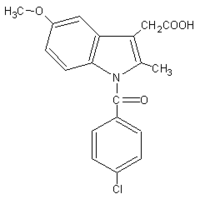An over-the-counter dietary supplement called SAM-e has been declared an effective treatment for depression, osteoarthritis and liver disease by the U.S. Agency for Healthcare Research and Quality. All the published studies (102) supporting SAM-e's use for these three conditions were reviewed.
SAM-e is short for S-Adenosylmethionine, a metabolite of methionine, which is an amino acid found in high-protein foods. Of the depression clinical trials in which people taking SAM-e were compared with people taking a fake look-alike pill (placebo), results generally favored the supplement. In the trials that compared SAM-e against an antidepressant drug, the effectiveness of the supplement was similar to that of the drug.
The same findings were shown in the ten clinical trials involving people with osteoarthritis pain. Whether the study compared SAM-e with a placebo, or SAM-e with a non-prescription painkiller, the supplement was better than a placebo and comparable to the drug. The painkillers used in these studies were from the drug class known as non-steroidal anti-inflammatory drugs, which includes aspirin, naproxen (Aleve), indomethacin (Indocin), and ibuprofen (Advil). SAM-e's painkilling effect on osteoarthritis was discovered accidentally when people who also had this condition enrolled in the depression clinical trials.
For certain types of liver disease, SAM-e was shown to be more effective than the standard medical treatments. For example, people treated with SAM-e were twice as likely as placebo-treated people to have a reduction in the pruritus (itching) associated with bile duct obstruction, which can occur in pregnancy, viral hepatitis, alcoholic hepatitis, and autoimmune liver diseases. SAM-e also showed a large effect in decreasing bilirubin levels in people with these liver diseases. One clinical trial showed that the standard medical treatment (ursodiol) was better than SAM-e for pruritus.
The reviewers of these SAM-e clinical trials identified the need for more research to provide a better understanding of the risk/benefit ratio of SAM-e supplement compared with medical treatments.
COPYRIGHT 2004 Center for Medical Consumers, Inc.
COPYRIGHT 2004 Gale Group



